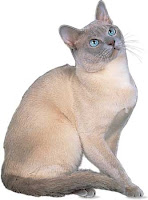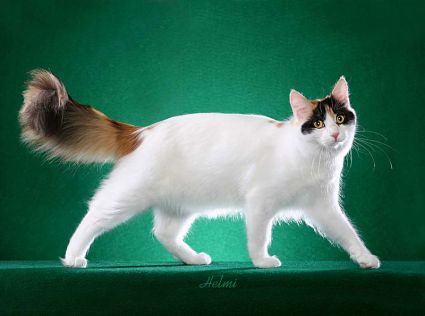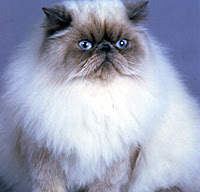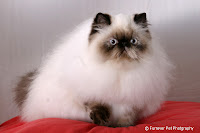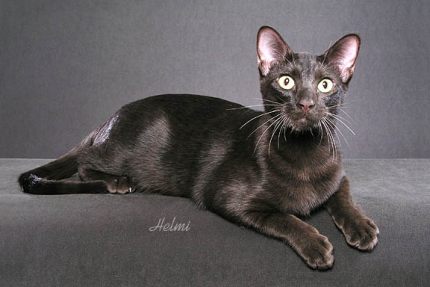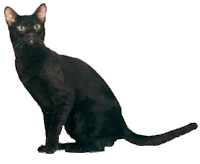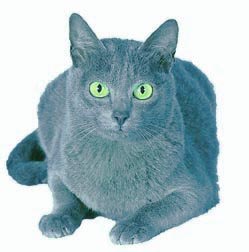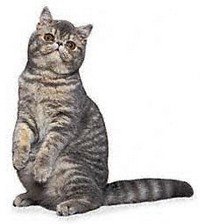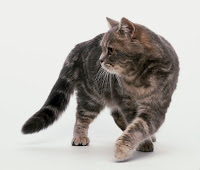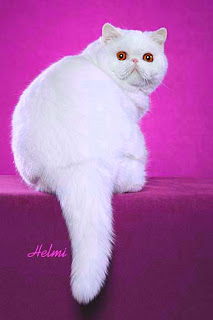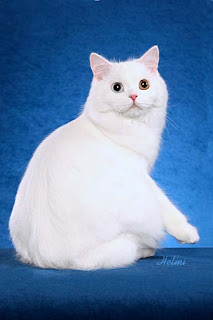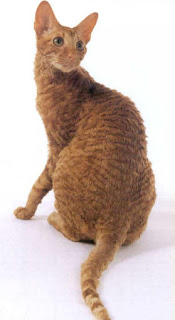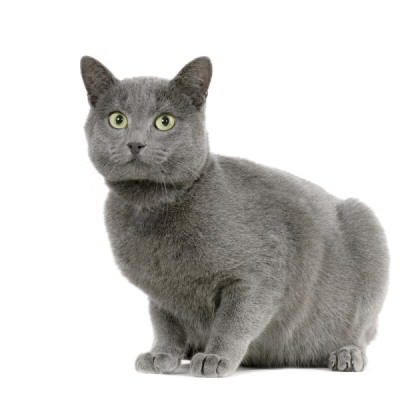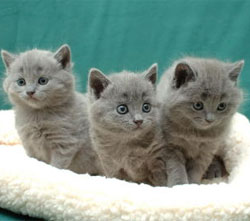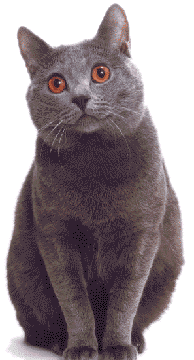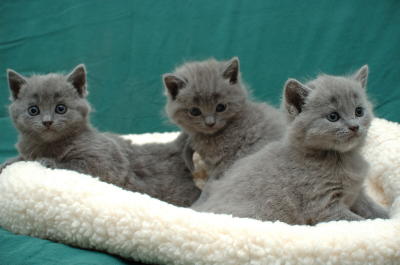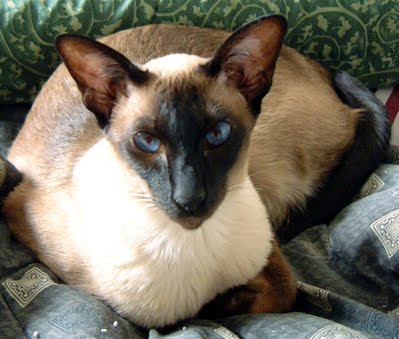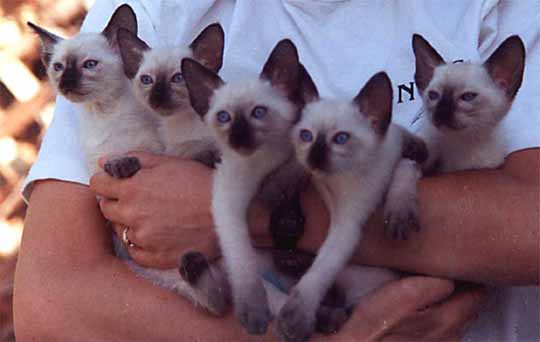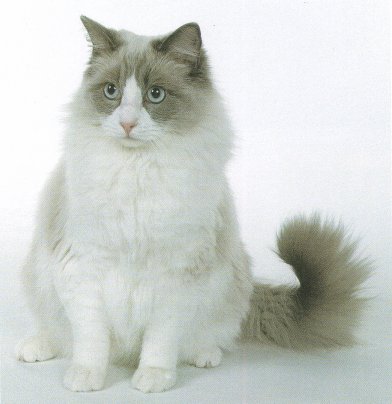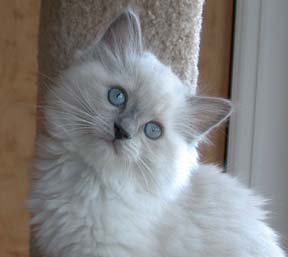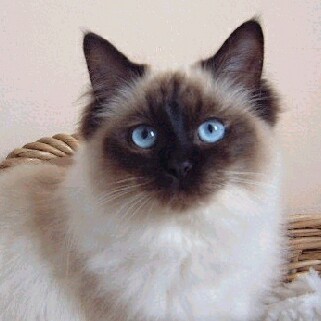Have a beautiful and wonderful cat is one of the dreams, whether collectors of
Manx cat. Cats is one that you like try to check out some of the article. I will tell you from beginning to end, starting from the history of the Manx cat up to the
Manx cat treatments.
Cat Personality - Breeds Cat Manx
Cat Manx personality is probably why he won this race a strong following, despite the difficulties and physical challenges in agriculture.
Manx cats are companions of the great house. They are intelligent cats, active and fun-loving, learning to speak very well, no queues rustling around. Manx get along with other animals (especially dogs), a strong bond with their chosen people. They enjoy taking a good game and be fascinated by water, but only on their terms, of course. Manx are exceptional jumpers because of their powerful hind legs. No furniture or shelf is safe with a round Manx.
The Manx rabbit as a corridor for its unusual, as (Manx-Hop.) Commonly known While some breeders and lovers of progress is the result of malformations of the skeleton, consider the Manx gene in comparison, others are simply returned by the short and long hind legs and , as in the Manx standard.
Cat Breed Traits
The Manx cat is one of the most difficult to reproduce because of the Manx gene. Manx cats homozygous (Manx cats who inherit the gene from both parents) die in vivo early in their development. Since the homozygous pups conceived about a quarter of the
Manx cats Manx litters couplings are typically small, with an average of two, three, or four kittens. Even the heterozygous kittens (kittens, that the Manx gene inherited from one parent) have mortality rate higher than the average because Manx gene can cause birth defects such as spina bifida, spinal fusion and fault colon. Because of potential physical problems, the standard requires disqualification of a coating Manx with birth defects. Careful screening can help prevent or decrease errors.
Like all Manx cats a single copy of the Manx gene, and because the cats can not true heterozygotes races,
Manx cats come in a variety of Kew lengths. Coccyx, coccyx riser, Stumpy and Longs: The types of queue are divided into four categories.
Competition in the championship and Rumps rings are very popular with the fans. They are completely tailless and often have a dimple at the base of the spine, where his tail, if they were resource persons would. Rise coccyx have a button on the short tail, which consists of 1-3 vertebrae associated with the last bone of the spine, and you qualify in the ring to the vertical rise of the bone is not going to stop, which sits right hip cats (Richter can a cat tail with the palm).
Stumps have a short stubby tail is often curled or folded.
Manx cats in CFA with a clear, visible tail joint is transmitted to all the different classes.
Along the tail almost as long as the average of a cat. Many breeders dock the tails of this vote pet-quality kitten at home, to find them easier, but not all fans with this practice.
Since the Manx gene is dominant, they are all
Manx cats Manx gene, one of the four types of tail. With all these variables,
Manx cats are show quality hard to find. Even a perfect Manx with a tail is not necessarily a show cat. It should also be the right kind of body and head, legs, ears together, and quality of the clothes.
History of the Manx cat breed?
The Manx has existed since many centuries on the Isle of Man, in the Irish Sea between England and Ireland. Since the island has not been an endemic species, of which the
Manx cat on the assumption that domestic cats, these sources by human settlers and explorers are introduced to develop. PLS and that is uncertain.
One story has it that cats were the source of the persons on board a ship destroyed the Spanish Armada, which was on the Isle of Man in 1588. Cats probably swim ashore to develop resources in Spanish and move the mouse instead of on the island. Another story claims that the Manx introduced by Phoenician merchants, who were transported the cats from Japan. Another said, come, that cat with the Viking settlers who colonized the Isle of Man.
Regardless of how the island has cats, probably came with their tails intact. Geneticists believe that the Tailless Manx? S is the result of a spontaneous mutation of population of domestic cats on the island? "S.
Manx cats are genetically and other domestic short tail is very different. Manx's tail, or lack thereof is by a dominant gene, polygenous controlled with the change, while most other short-tailed breeds, such as the Japanese Bobtail, governed by recessive genes. Since the island gene pool inside and a small, easily passed the dominant gene from one generation to the next.
The inhabitants of the island, unaware or indifferent to the scientific theory was boring, the most interesting stories to explain the lack of Manx. It is said that the Manx is a cross between a cat and a rabbit unlikely. Another said that the Irish invaders stole the cats' tails to use for the helmet feathers. A third said that two contacts were passengers on Noah's Manx cats, but the human resources for the final assault aboard Noah to close the door on your heels!.
The modern history of the Isle of Man is better documented, if more mundane. The Manx breed is a popular and established before the first day of the chat world, supported by an enthusiastic group of Manx owners. King Edward VIII was said to a
Manx cat shows, imaginative and often accompanied by the breed. The British fans were the first club in 1901 Manx. The Manx has a trip to America almost 100 years ago (probably more) and the
Manx cats are mentioned in the paint early American Registry documentation.
Manx cats were the first human resources from the Isle of Man to exported, but as demand increases, reducing the offer. Fans had to rely on British and American sources for their cats and to grow as
Manx cats difficult demand is outstripping supply. Today, a show-quality
Manx cats are very popular because of their rarity, but quality of the animal can achieved easily.
Copyright © 1998 by Barron's Educational Series, Inc. based on
ENCYCLOPEDIA OF CAT BREEDS by J. Anne Helgren.



